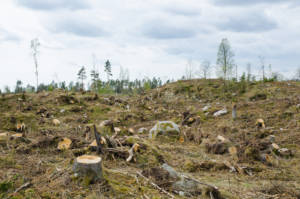
Using used goods, having an outdoor ceremony, and using recyclables are a good way to have a more eco-friendly wedding.
One environmentally friendly philosophy has entered the wedding industry. If you want to reduce your carbon footprint during your special day, you don’t have to give up the vision you have for your wedding. Here are some tips to help you find ways to turn your ceremony and reception into an eco-friendly wedding.
- Choose an outdoor venue where the sun can provide the lighting. Many outdoor venues have the modern conveniences of toilets and sinks, making a more comfortable atmosphere for your guests.
- If an outdoor venue is not an option, hold the ceremony and reception during the day in a venue that offers natural lighting. Host all the festivities during the day to avoid having to use electricity.
- Also, hold your ceremony and reception in the same place. This will reduce the fuel emissions from guests.
- Look for a venue that is environmentally friendly.
- Print up wedding invitations on recycled paper, but instead of multiple inserts in the envelope, send your guests to your wedding website for more information. Go paperless with save-the-date notices.
- Buy seasonal flowers from local vendors. Use potted plants or topiaries as centerpieces. You could also use silk flowers for your bouquet and decorate with items that can be reused later. There are also many options for decorations that can be found in your garden, such as twigs, moss and ivy.
- Rent hybrid vehicles or use a horse and carriage to arrive and leave the wedding venue, if you must have a special moment.
- Rent linen napkins instead of paper. Ask for glass tabletops and forego tablecloths.
- Choose caterers that source from local farms and dairies. You can also serve local wines, champagnes and beers. Ask your caterer about its green philosophy. Does the company use eco-friendly cleaning products and is it careful with its paper consumption? Your cake baker should also use organic products and source locally as much as possible.
- Avoid sturgeon caviar or Chilean sea bass and other threatened species.
- Choose a honeymoon location that keeps your green vision in mind. Travel in eco-friendly methods and look for a hotel that is designed to be environmentally friendly.
What to Wear for an Eco-Friendly Wedding
For the bridal party’s attire, go eco-friendly by reusing garments. Many brides wear a gown from their mom or grandma, but if that is not an option, shop at a vintage clothing or consignment store. You can also rent gowns, much like you rent tuxedoes. If you want your own dress, look for one made of sustainable fabrics, such as silk, hemp or organic cotton.
Instead of choosing specific bridal party dresses, allow the bridesmaids to wear dresses they already own or give just a few guidelines to allow them to choose a dress that can be worn again. Your bridal party can show off their own style while finding dresses they love.
For the groom, instead of wearing a tux that might never come out of the closet again, invest in a good suit that can be used for other special occasions. Allow the groom’s attendants to wear nice pants, button-down shirts and matching vests instead of jackets.
Reduce, Reuse and Recycle
You might have to ask your vendors what they are doing to reduce their carbon footprint. Find ways to reuse items from your eco-friendly wedding. Shop at flea markets or antique stores for decorations. Ask your decorator or designer about what he or she already has in inventory. Talk to your friends about reusing wedding decorations. It might take a little more effort on your part to be environmentally conscious, but it can also make for a beautiful wedding that matches your philosophy.



